Laboratory for Research and Conservation of Architectural Elements and Details
Leader: dr hab. Piotr Niemcewicz, prof. UMK
The scope of the Laboratory’s activities is focused on in-house research, project implementation, and service activities in the following areas:
- Research and conservation of objects made from various types of materials: natural and artificial stones, resin composites, metal alloys, enamels, ceramics, stained glass, multi-material objects of artistic craftsmanship, and also paleontological skeletons. We carry out the identification of manufacturing techniques, identification of historical layers, assessment of condition, determination of material properties, and causes of deterioration. We establish the authenticity of an object, its individual layers, their origin, and the time of their creation. We develop conservation guidelines along with a detailed program of research and conservation work. We carry out professional conservation and restoration of historic objects in specialized teams of artist-conservators, combining comprehensive knowledge in the fields of concrete technology, ceramics, jewelry-making, archaeology, art history, heritage studies, painting, and sculpture.
- Services are also provided for other scientific and industrial fields, particularly those involving the use of mineral binders. This includes the preparation of binder products for conservation and restoration upon request, research on binder materials regarding their performance parameters or mechanical properties. We conduct analyses in accordance with industry and/or national standards, ensuring reliable and comparable results (ISO compliance). We conduct research into new mortar technologies. It is possible to prepare a set of conservation materials suitable for use on the most commonly encountered stone materials in Poland (e.g. Gotland sandstone, Śmiłów sandstone, Pińczów limestone, alabaster, etc.).
We carry out comprehensive research and conservation-restoration work on complex, multi-material heritage objects — for example, the panneau by Stefan Knapp made using enamel on a metal substrate, or the sculpture Girl with a Mongoose by Melchior Zapolnik, created from a polyester resin-based composite.
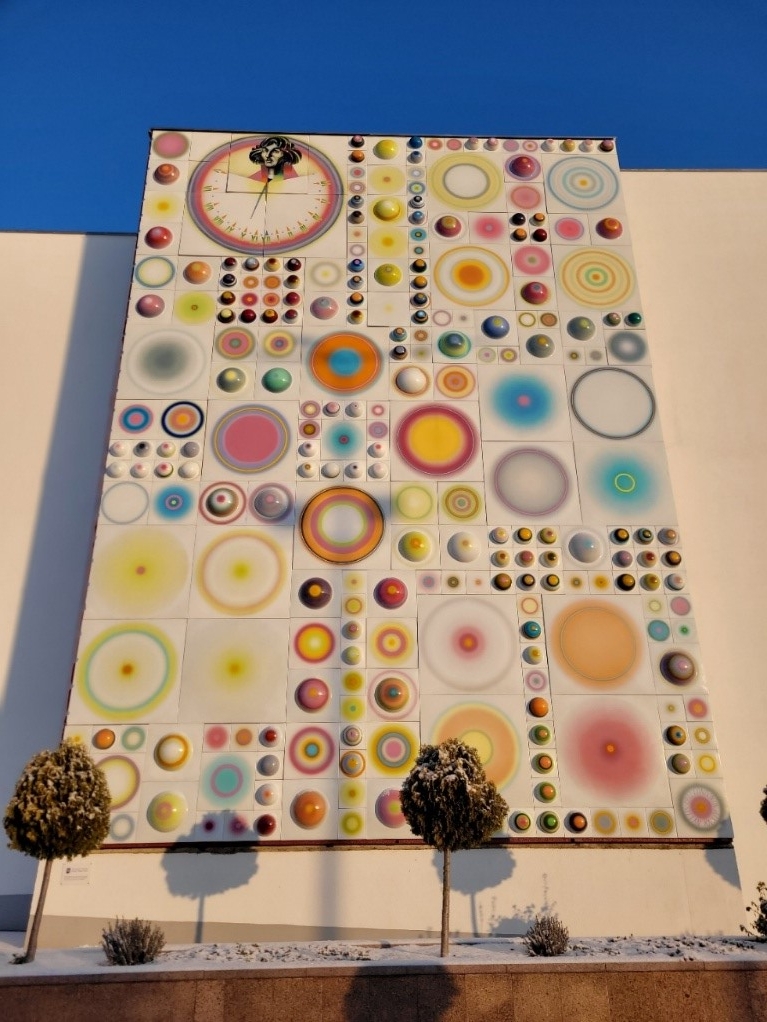
The panneau by Stefan Knapp, after conservation and restoration, mounted on the façade of the auditorium at Nicolaus Copernicus University, photo: M. Iwanicka
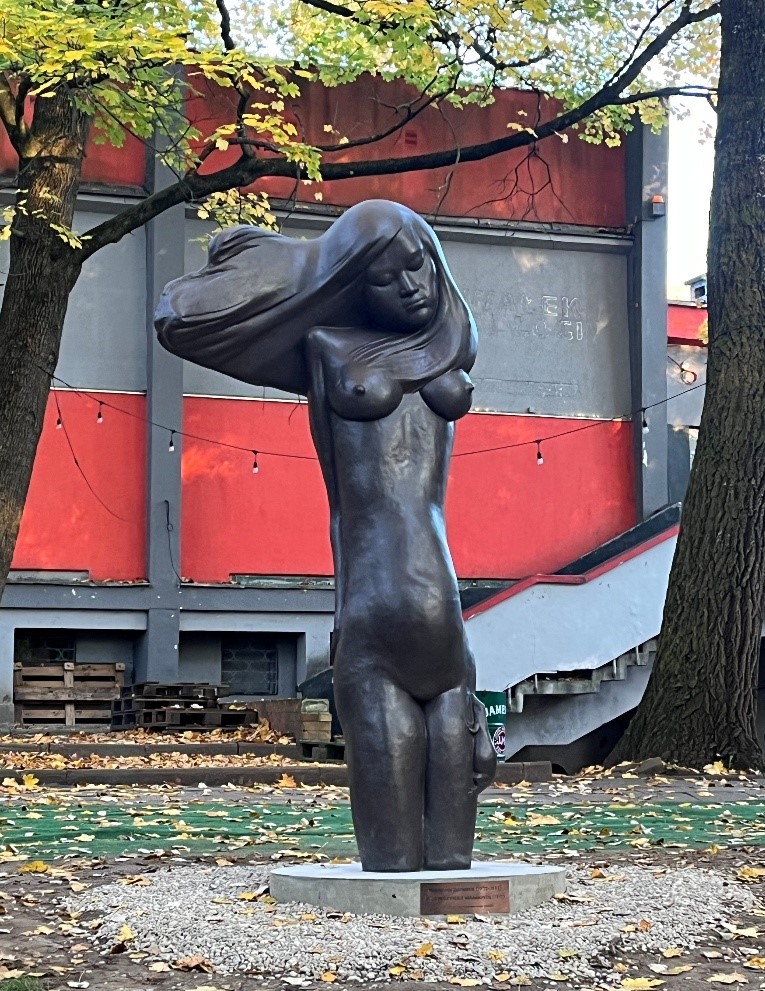
The sculpture "Girl with a Mongoose", after conservation and restoration, in front of the BWA gallery building in Koszalin, photo: P. Niemcewicz
We conduct research and conservation of historic paleontological skeletons
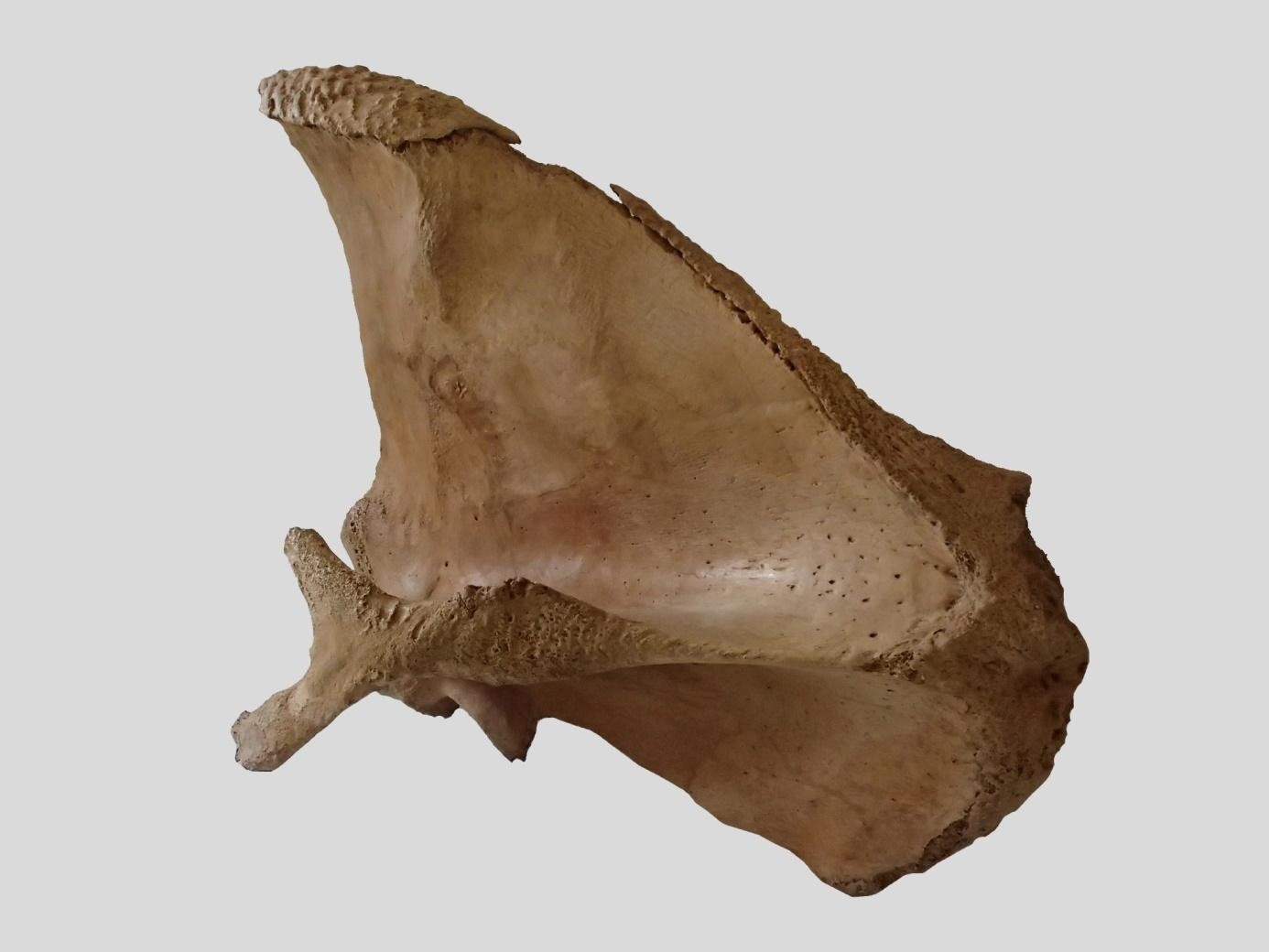
Right scapula of a straight-tusked elephant (Palaeoloxodon antiquus [Falconer & Cautley, 1847]) from the Eemian interglacial period (80,000–100,000 years ago) after conservation, on display at the District Museum in Konin, photo: A. Gralińska-Grubecka
We perform material composition analyses using:
-
Fourier-transform infrared absorption spectroscopy (FTIR) with the Bruker ALPHA I spectrometer equipped with an ATR accessory and a diamond crystal;
-
Elemental composition analysis using X-ray fluorescence (XRF) with the Bruker Tracer 5i spectrometer;
-
Thermogravimetric analysis (TGA) with the TG/DSC-STA 6000 thermal analyzer by Perkin Elmer, equipped with an autosampler.

Material composition analysis using Fourier-transform infrared absorption spectroscopy (FTIR) with the Bruker ALPHA I spectrometer equipped with an ATR accessory
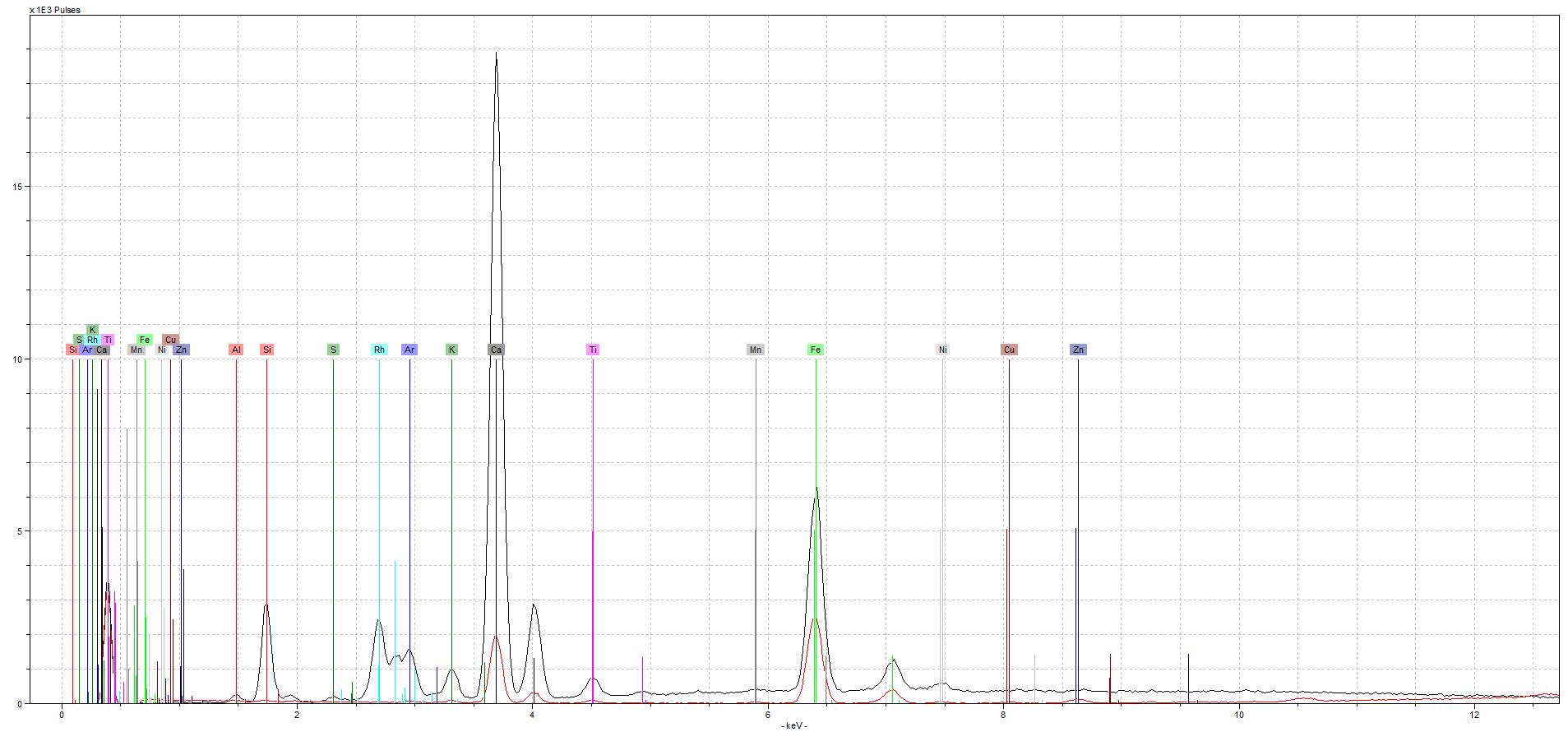
Elemental composition of the coating determined using X-ray fluorescence spectroscopy, author: G. Szczepańska.
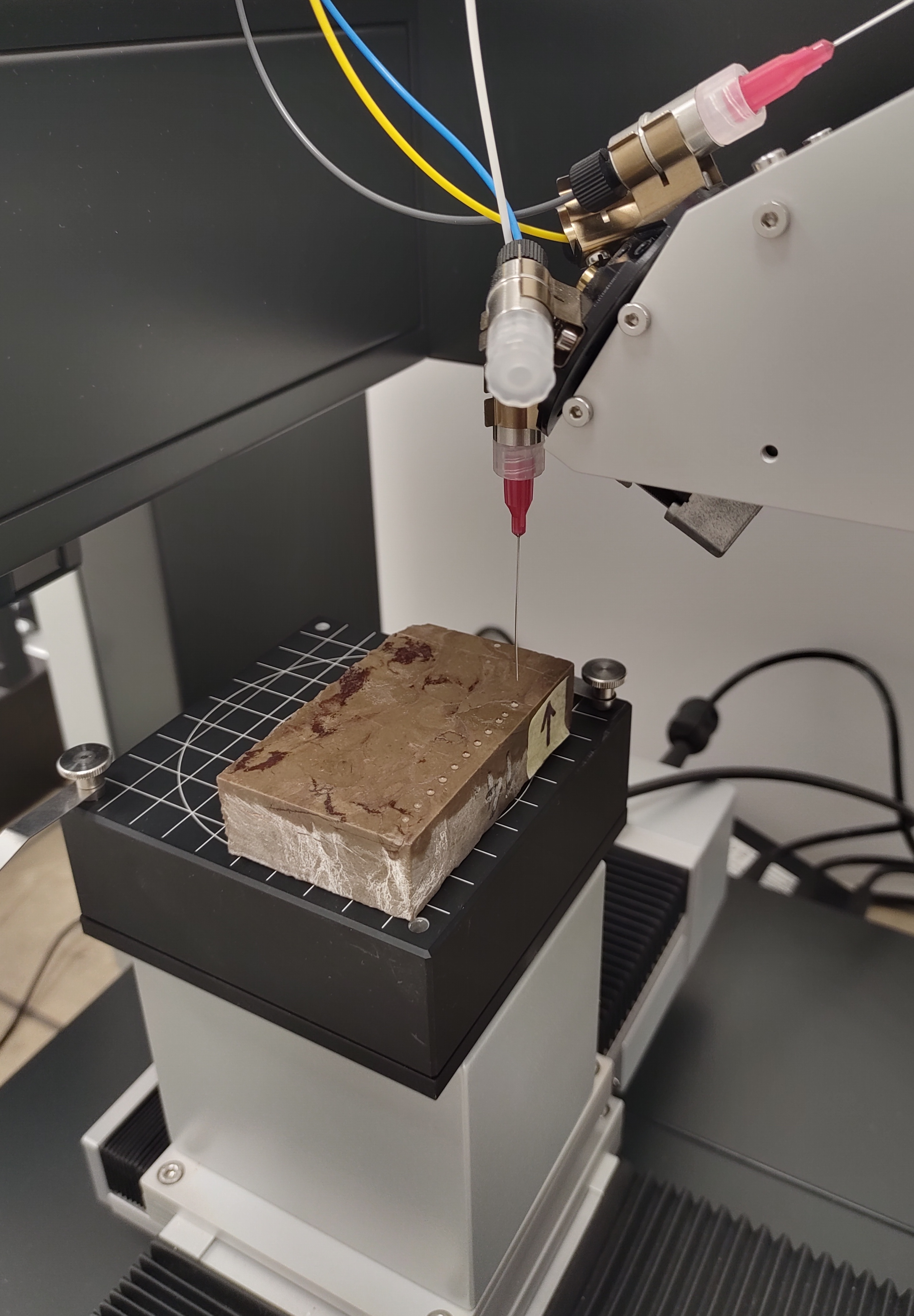
Material composition analysis using thermogravimetric analysis method. Thermal analyzer TG/DSC-STA 6000 by Perkin Elmer equipped with an autosampler
We perform surface analysis (topography) and profilometry of samples
We conduct surface studies of heritage objects using the NIKON ECLIPSE Ci research microscope with a profilometry station (DeltaPix 6ZS-3D module). This device is primarily used to determine the technique of creation of heritage objects and allows for recording their degradation processes, which are difficult to observe with the naked eye. The microscope can be utilized to document the surface of artifacts to assess the effectiveness of conservation treatments.
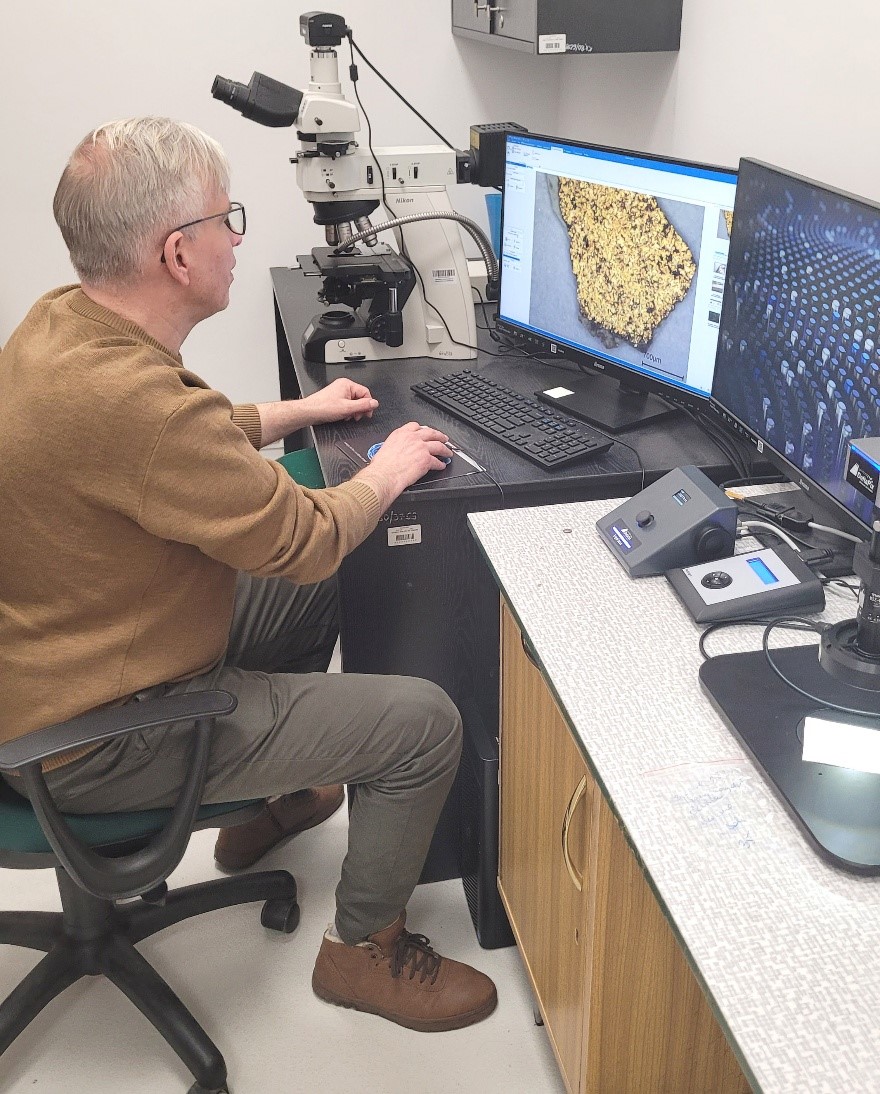
Surface analysis using the NIKON ECLIPSE Ci microscope with a profilometry station (DeltaPix 6ZS-3D module)
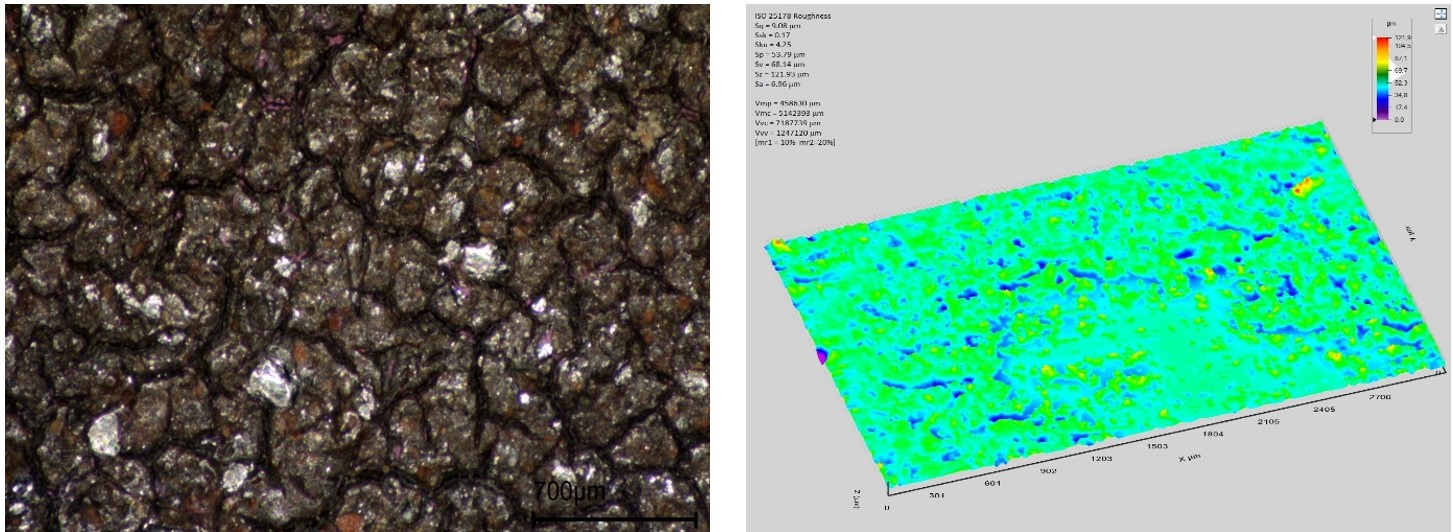
Surface image of the material in reflected light (on the left) along with the surface profile (on the right), author: A. Podgórski
We perform color assessment and color change analysis of materials using a spherical spectrophotometer (CM-2300d spectrophotometer, Konica Minolta).
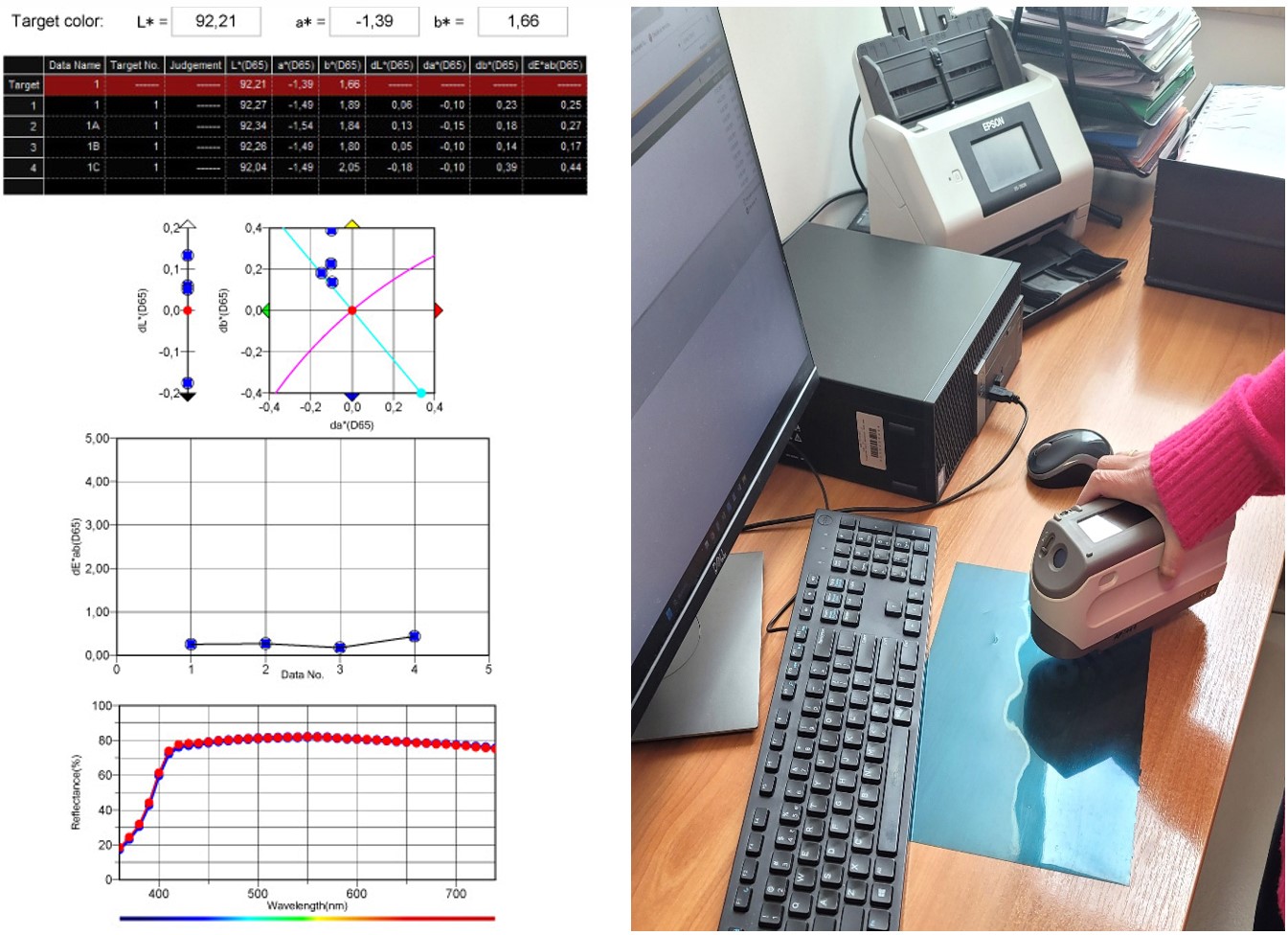
Color change assessment of the material using the CM-2300d spherical spectrophotometer by Konica Minolta, along with the measurement result, author: M. Kujawa
We conduct tests to determine the salinity level of samples, including quantitative and qualitative analysis, using the capillary electrophoresis apparatus EA 102 (Villa Labeco, Slovakia) or the UV-VIS spectrophotometer U1800 by Hitachi.
We conduct tests on the mechanical properties of construction materials:
- Compression strength tests of construction material and mortar samples (prepared by the client) with crushing load in the range of 3 to 300 kN (ToniPRAX 1543, ZwickRoell). The testXpert® software enables control over the device operation and processing of the obtained results.

Tensile strength tests of construction material and mortar samples (prepared by the client) with a maximum tensile strength in bending of 14 MPa (RMU TESTING EQUIPMENT S.R.L.).
Studies on the physicochemical properties of mortars and building materials:
- Determining the setting time of cement and mortar (Vicamatic 3 – automatic Vicat device in accordance with PN-EN 196-3)
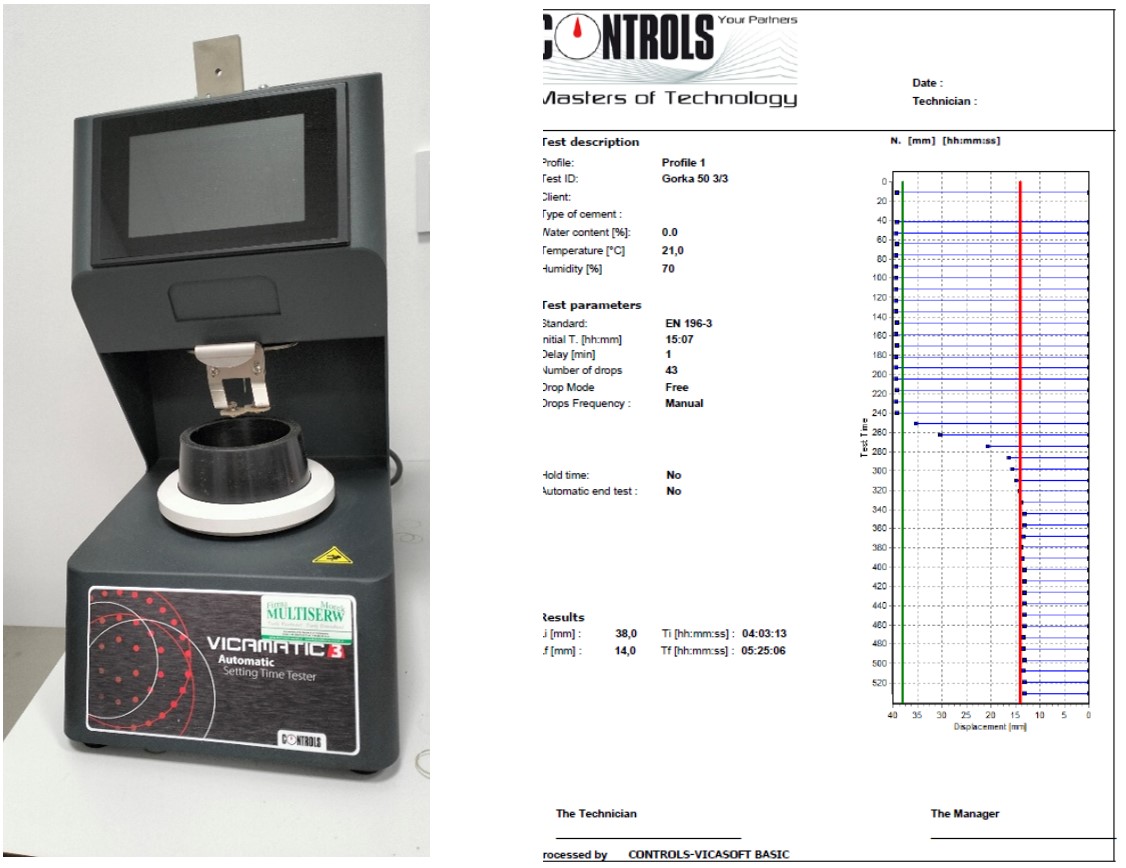
- Determining the consistency of fresh mortar (automatic flow table for mortar testing according to PN-EN 1015-3)
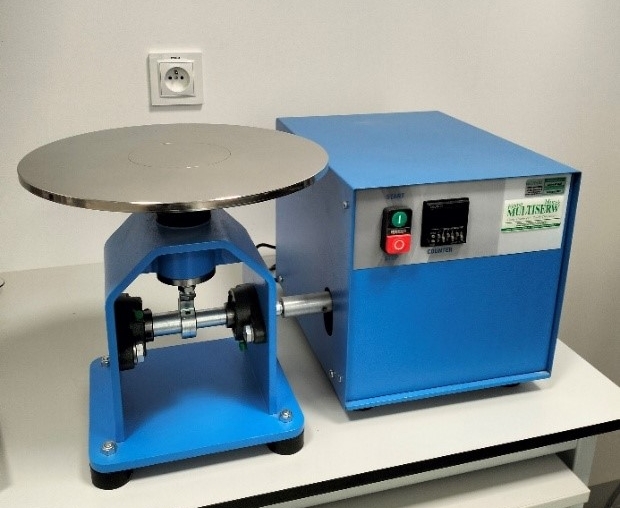
- Determining the air content in fresh mortar (1L apparatus with a manual pump, compliant with the PN-EN 12350-7 standard, TESTING 1L)
- Evaluation of the capillary properties of porous materials (absorbability by weight, apparent density, volumetric absorbability, open porosity). The measurement is carried out using the OHAUS hydrostatic balance, Pioneer model PX523M/1.
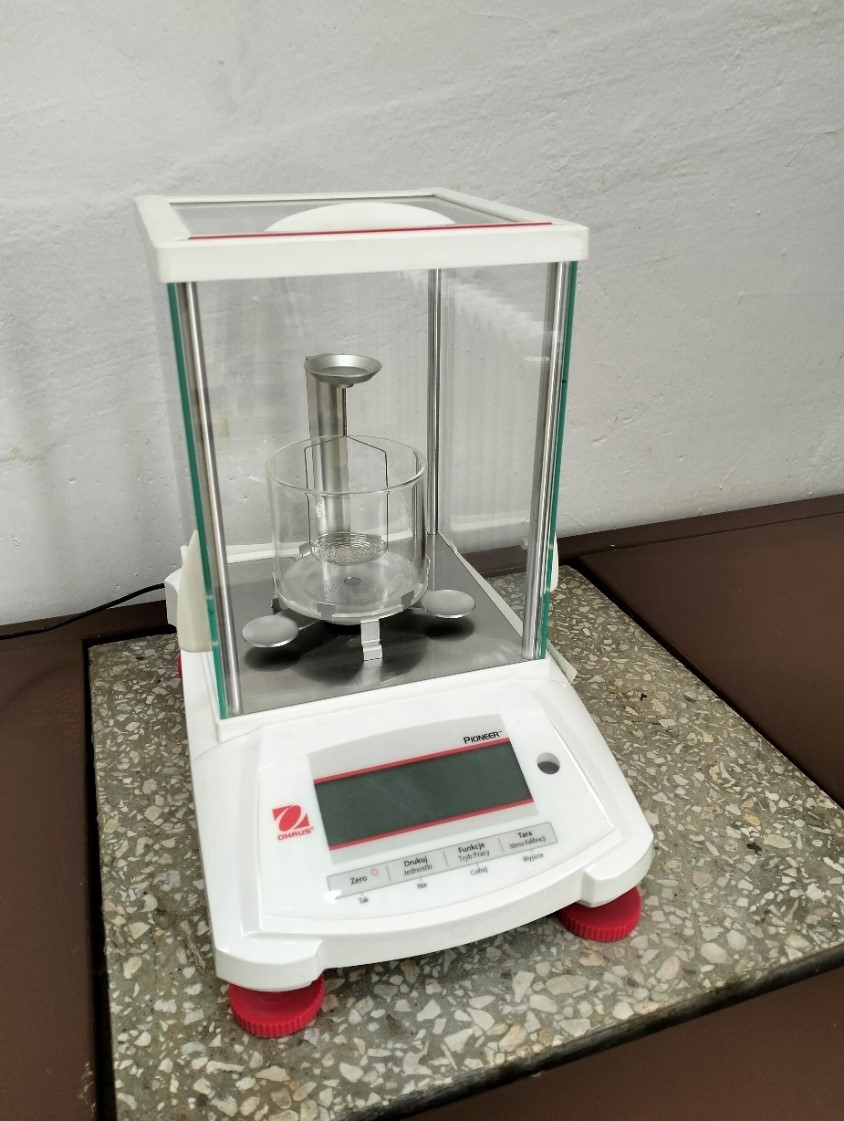
Testing the stability of materials under variable temperature and humidity conditions:
The tests are conducted in the VÖTSCH VC 4033 climate chamber, which allows simulation of climatic conditions (temperature, humidity) in tests on the stability of samples to the aforementioned factors. Climatic tests – humidity range from 10% to 98%, temperature range from +10°C to +90°C. The device can be programmed to operate in a mode with cyclically changing parameters.
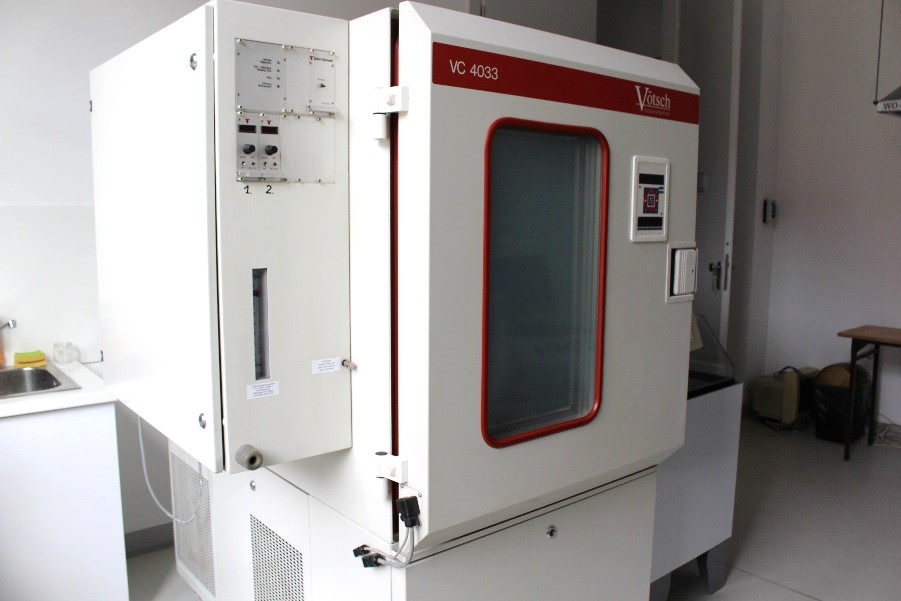
Aging tests of materials under simulated sunlight radiation conditions
Accelerated aging tests of various materials are conducted in the Xentest 2200 aging chamber (TestAn Polska), which allows testing both in dry and wet conditions. The assessment of the sample's stability in aging tests can be performed by determining the total color difference ΔE between the tested sample and the reference (unexposed) sample – measured in the CIE Lab color space.
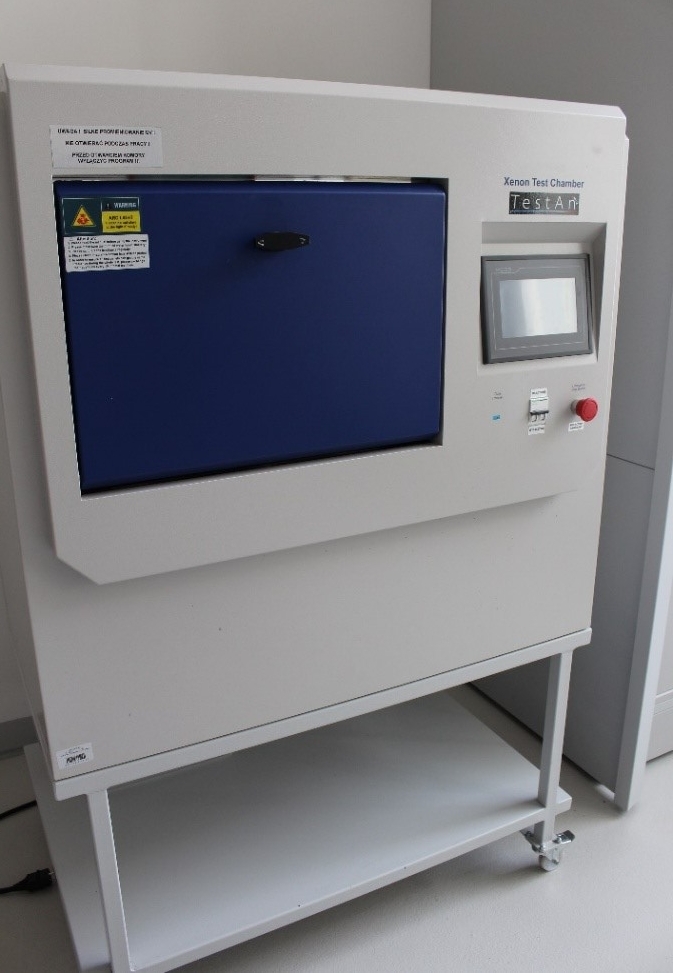
Accelerated corrosion testing of materials
The salt spray test, conducted using the SALT-CAB 150 salt spray chamber.
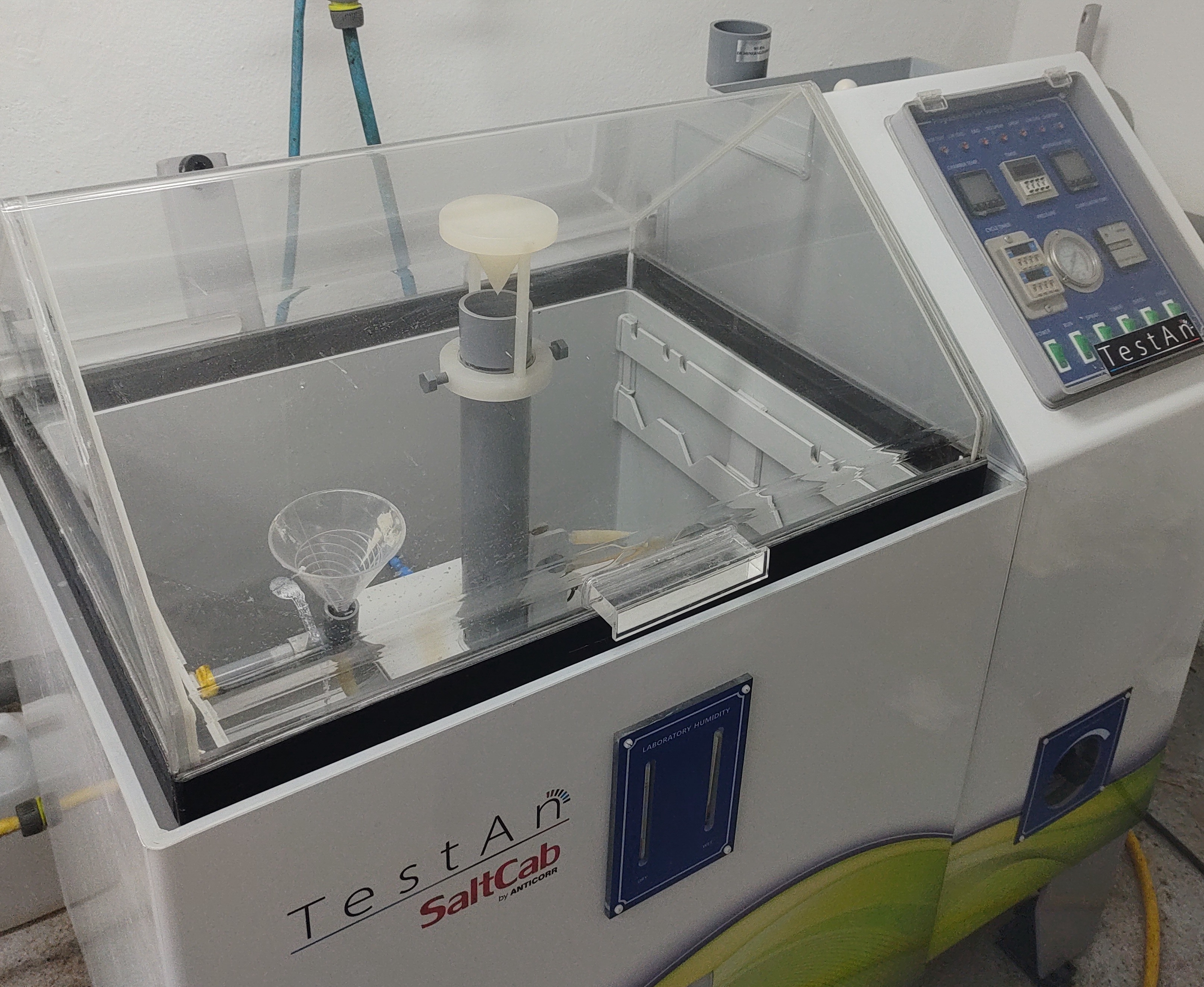
Testing of selected physicochemical and mechanical properties of paints, varnishes, adhesives, and other products based on macromolecular binders:
- Gloss (Gloss meter TestAn series DT 268 Advanced – the device allows gloss testing at 20, 60, and 85-degree angles. The gloss meter complies with ISO 2813, ASTM D 523, ASTMD 2457 standards).
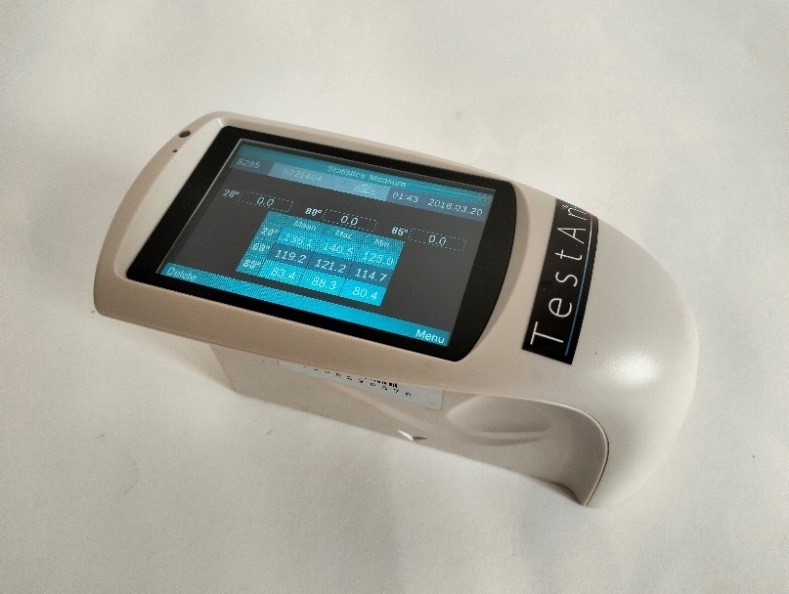 - Determining the viscosity of liquids using the AMETEK Brookfield DVNext LV digital rheometer.
- Determining the viscosity of liquids using the AMETEK Brookfield DVNext LV digital rheometer.
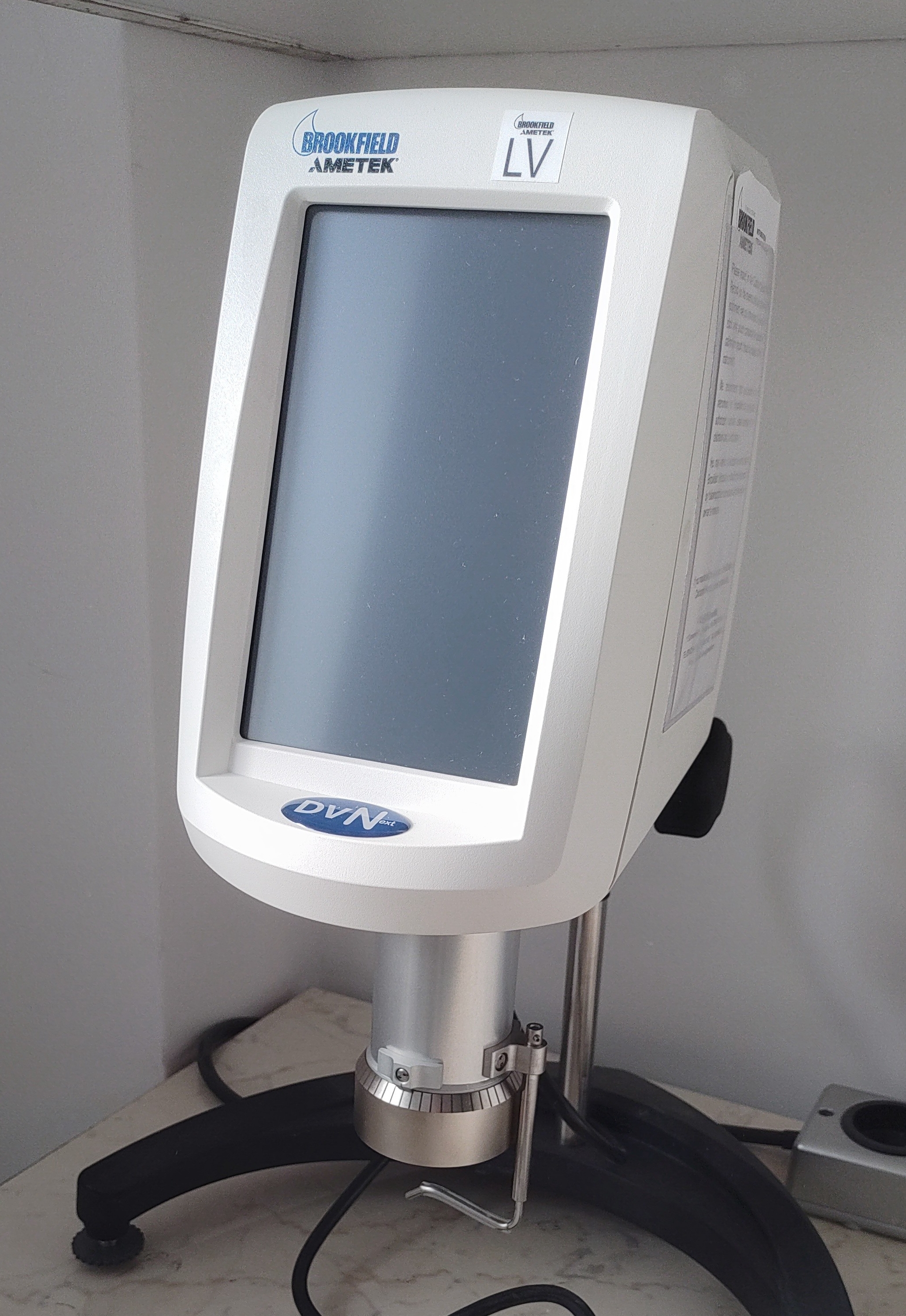
- Measurement of dry coating thickness (PosiTector 200) – ultrasonic gauge for non-destructive measurement of paint coatings, compliant with ISO 2808. It measures the coating layer on non-metallic substrates such as wood, glass, plastic, stone, leather, or rubber. The device's measurement range is 13-1000 μm.
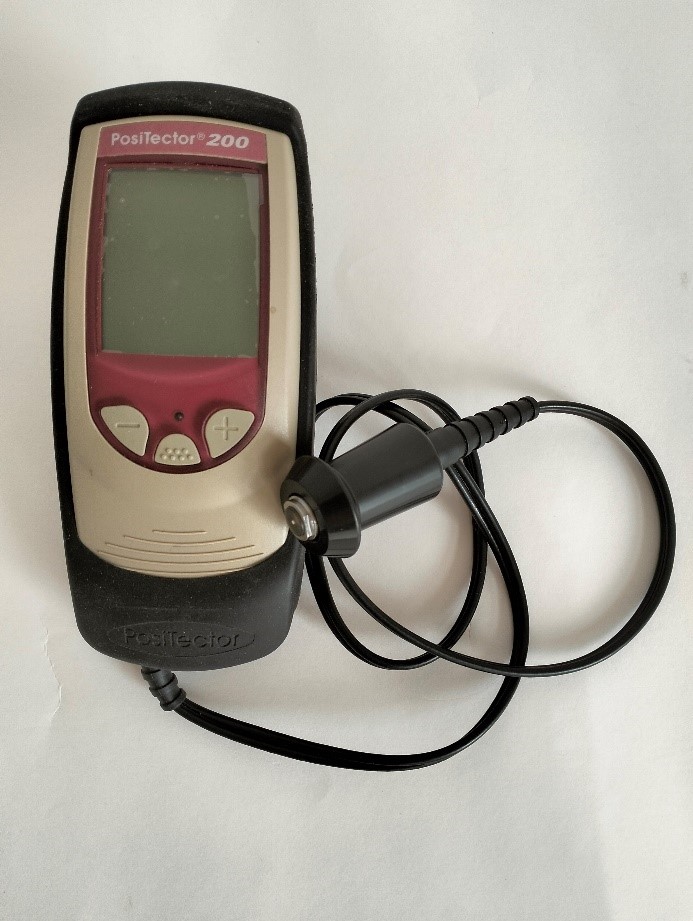
- Relative hardness (pendulum apparatus type AW-6 made in accordance with the guidelines of PN-EN ISO 1522 standard). The apparatus is designed for measuring the relative hardness of coating layers using the phenomenon of varying damping of the pendulum's oscillations. The device is equipped with two pendulums – the Kőnig pendulum and the Persoz pendulum.
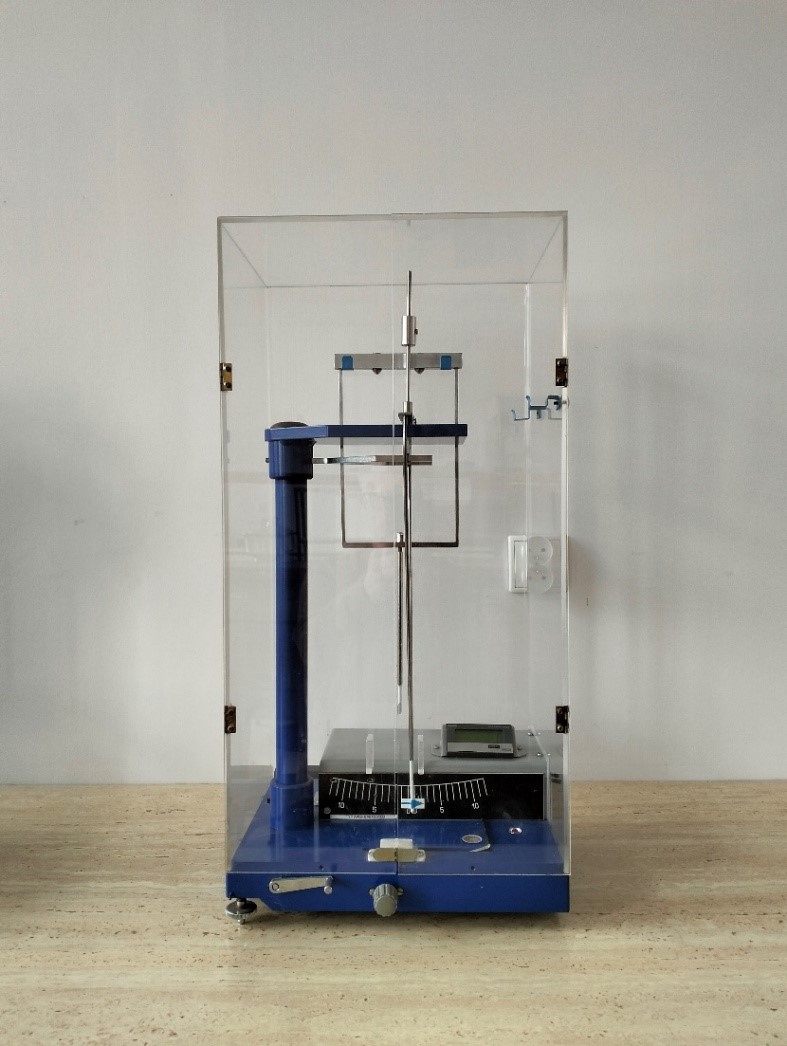
- Elasticity: Testers (pins) for testing bending resistance allow for assessing the degree of resistance to deformation in accordance with the requirements of ISO 1519 standard.
- Scratch resistance: The TQC Sheen Hardness Test SP0015 (sklerometer) – the device complies with the DIN 55656; ISO 1518; AS 3894.4; EN 438-2 standards.

- Adhesion (pull-off method). The automatic PosiTestModel AT-A tester, equipped with an electronically controlled hydraulic pump, is designed for measuring the adhesion of coatings with a range up to 20 MPa. The self-aligning mushrooms enable measurements on soft or uneven surfaces without negatively impacting the results. The device complies with the following standards: ISO 4624, ISO 16276-1, ASTM C1583/D4541/D7234, EN 1542/12004-2.
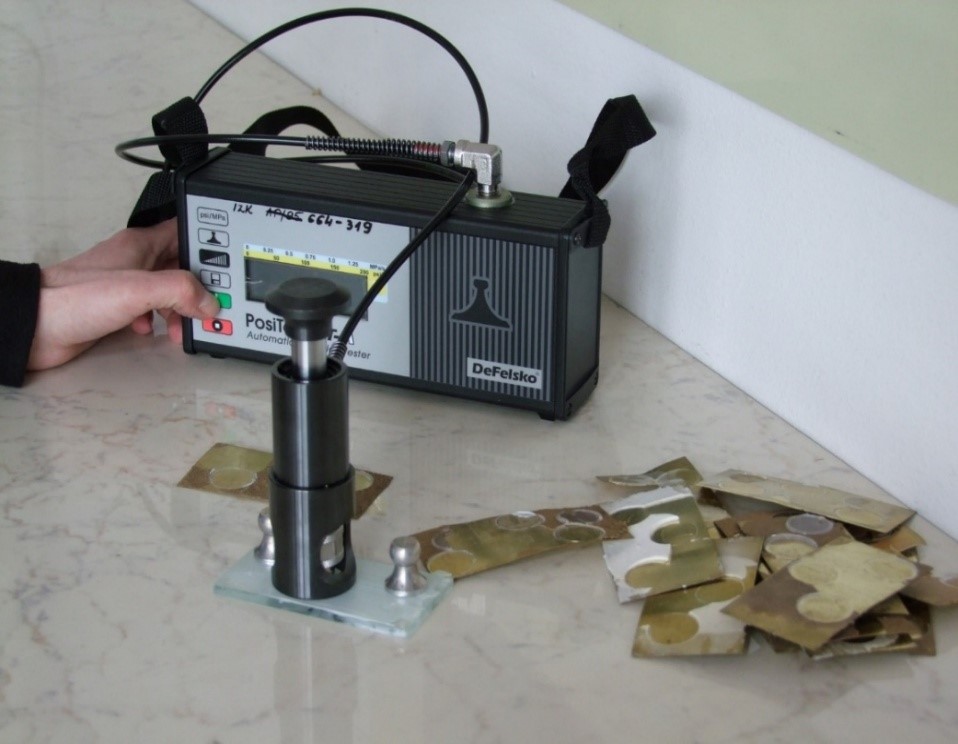
Biodeterioration studies of mineral materials (assessment of fungal and bacterial activity, microorganism identification) are conducted by the research Team for Biodeterioration of Cultural Heritage.
Selected Projects Completed by Our Laboratory:











